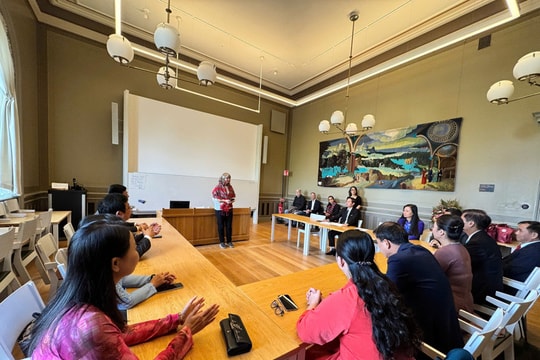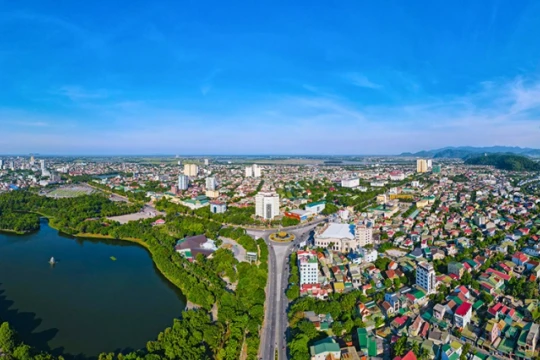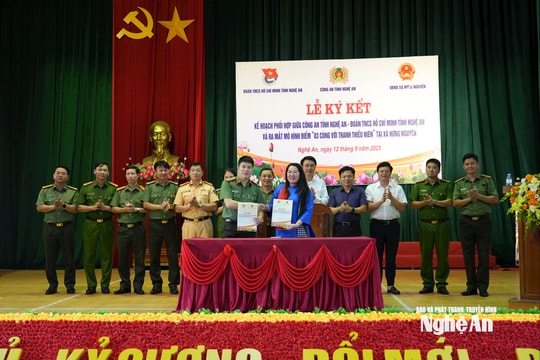Paving the fields, growing duckweed to raise crabs for "huge" income
(Baonghean.vn) - Mr. Nguyen Dinh Tu in Nhan Son commune, Do Luong district (Nghe An) has boldly invested in raising crabs in rice fields.
When Nhan Son commune (Do Luong) carried out land consolidation according to Directive 08 of the Provincial Party Committee Standing Committee in 2012, the bad and low-lying land areas were almost abandoned, no one wanted to receive them. Mr. Nguyen Dinh Tu boldly exchanged all the cultivated land areas, including grade 1 fields, to concentrate into one plot on such land in the field of hamlet 7.
Mr. Tu has invested his efforts to renovate this land and converted it from monoculture of rice to multi-cropping. After many years of land consolidation and accumulation, Mr. Tu's farm now has an area of about 3,000 m2.
 |
| One of Mr. Tu's crab ponds; the pond surface is divided into cells to grow water fern to protect the crabs from the sun. Photo: Ngoc Phuong |
With the help of the Commune Farmers' Association, in 2017, Mr. Tu implemented a crab farming model. In the first year, he only raised crabs on a small area, but seeing the good income, he expanded the area to 1,000 m2to supply customers in and out of the district.
Mr. Tu shared that raising crabs is not difficult, but requires technical knowledge, most importantly, regular monitoring, from which you can draw many experiences that are not in books. For example, the summer weather in Nghe An is often very hot, while crabs cannot withstand the heat, leading to poor growth and even mass death.The solution is very simple, divide the cells into duckweed cells so that the crabs can take shelter under the duckweed surface.
 |
| Male crabs are selected for breeding and can be distinguished from female crabs by a deep groove in the middle of their abdomen. Photo: Ngoc Phuong |
In designing ponds, processing food, harvesting and transporting methods... Mr. Tu also has his own innovations; for example, when molting, the crab's weak body is easily eaten by other animals or even healthy crabs, so around the pond, fake banks must be built for the crabs to make burrows and hide.
Regarding the source of breeds, Mr. Tu himself goes out to catch the fish in the fields. The ones that are beautiful, bright, agile, and have a tendency to develop, he brings them back to the pond to release in. There is no need to go to a farm to buy the breeds; every month2 He released a pair of crabs into the water. The way to distinguish the male is by the deep groove in the middle of the abdomen, while the female has a lid that covers her entire abdomen.
Crabs' main food is rice bran, corn, broken rice, dry buffalo manure, and earthworms. During the rearing process, when the crabs have eggs in the incubator, after 10 days of laying eggs, the crabs will molt and develop normally. Crabs will lay eggs continuously from March to August.
 |
| Farmed crabs will ensure food safety and hygiene; currently, Mr. Tu sells them on the market for 100,000 - 130,000 VND/kg. Photo: Ngoc Phuong |
Currently, Mr. Tu's family sells an average of 150 kg of crab per month, selling for 100,000 - 130,000 VND/kg, earning 7 times more income than growing rice. In addition to raising crabs, Mr. Tu also raises nearly 300 Dong Tao chickens and ducks; and grows hundreds of fruit trees such as apples, lychees, longans, grapefruits, oranges, and bananas.

.jpg)



.jpg)


